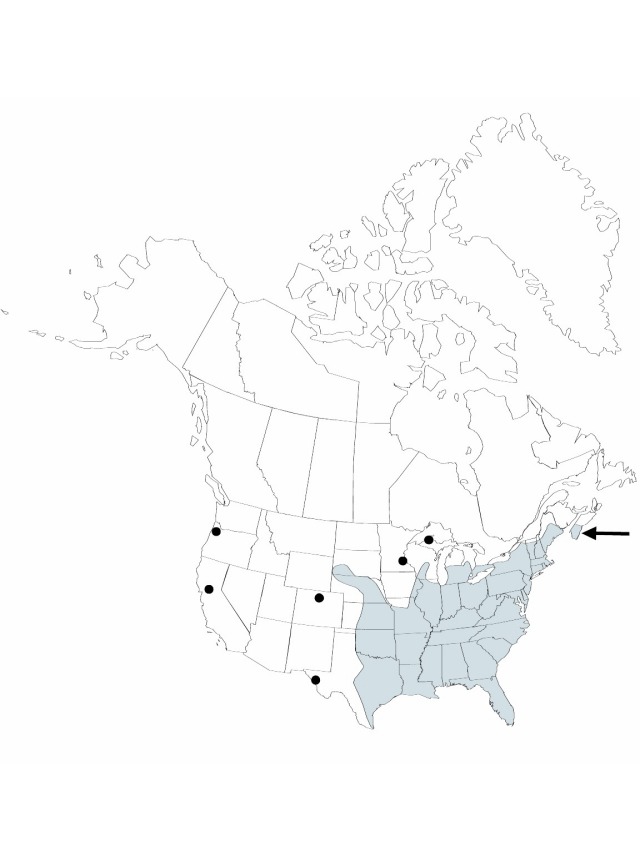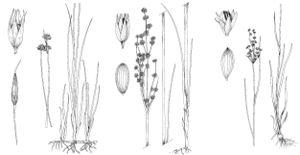Juncus marginatus
de Junco 38, plate 2, fig. 3. 1801.
Herbs, perennial, occasionally tufted, sometimes rhizomatous, 3–13 dm. Rhizomes short, knotty. Culms compressed. Leaves basal and cauline; auricles 0.5–1.5 mm, apex rounded, membranous; basal blade flat, 20–4.5 dcm × 1.5–5 mm, cauline reduced. Inflorescences glomerules, (2–)5–200, each with (1–)2–10(–20) flowers, mostly open, 3–10(–15) cm; primary bract shorter than inflorescence. Flowers: tepals dark brownish, usually with green midstripe, outer series ovate-lanceolate, 1.8–3.2 mm, margins broad, clear, awned or not, apex acutish; inner series ovate to lanceolate, 2–3.5 mm, slightly longer than outer series, apex obtuse to acute, awned or not; stamens 3, opposite outer tepals, shorter to longer than tepals, filaments 1.1–2.5 mm, anthers 0.3–1.2 mm; style 0.3 mm. Capsules brown and sometimes dark spotted, 3-locular, obovoid to nearly globose, 1.8–2.9 mm, shorter to longer than perianth. Seeds yellow to light brown, fusiform, 0.4–0.7 mm, not tailed. 2n = 38, 40.
Phenology: Flowering and fruiting late spring–fall.
Habitat: Moist to wet sandy, peaty, or clayey soils, usually in open areas including bogs, shores, marshes, and ditches
Distribution

N.S., Ont., Ala., Ariz., Ark., Calif., Colo., Conn., Del., D.C., Fla., Ga., Ill., Ind., Iowa, Kans., Ky., La., Maine, Md., Mass., Mich., Minn., Miss., Mo., Nebr., N.H., N.J., N.Mex., N.Y., N.C., Ohio, Okla., Oreg., Pa., R.I., S.C., S.Dak., Tenn., Tex., Vt., Va., W.Va., Wis., Mexico, West Indies (Cuba), Central America.
Discussion
The number of glomerules per inflorescence, stamen length vs.versus perianth length, and tepal shape have separately and in combination been used to distinguish a number of taxa at various nomenclaturalorial ranks. These characters, however, vary considerably across the distribution of the species (broad sense) and do so independently of one another to the point that if separate taxa are recognized, they pass insensibly among each other.
Selected References
None.
